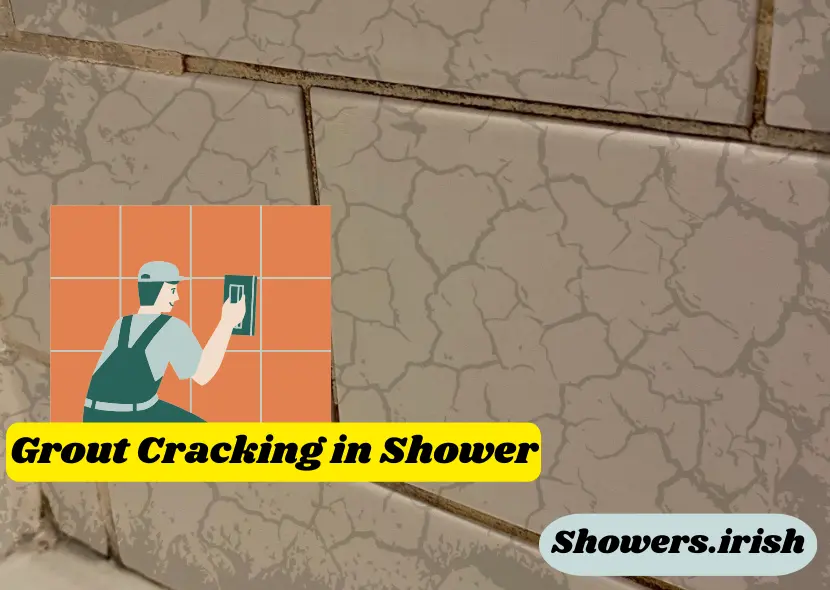Grout cracking in showers is a common issue that can lead to water damage and diminish the aesthetic appeal of your bathroom. Understanding the causes, prevention strategies, and repair methods is crucial for maintaining a functional and visually pleasing shower space.
Understanding Grout and Its Role
Grout plays a pivotal role in showers by sealing gaps between tiles, preventing water from seeping into the substrate beneath. It is typically a mixture of cement, sand, and water, applied in a paste-like consistency that hardens over time. Despite its durability, grout is susceptible to cracking under certain conditions.
Composition and Properties
Grout composition significantly influences its strength and resilience. Cement-based grouts are widely used due to their affordability and initial strength, but they can be prone to cracking over time, especially in wet environments like showers. Epoxy grouts, though more expensive, offer superior durability and flexibility, making them less susceptible to cracking.
Factors Leading to Cracking
Several factors contribute to grout cracking in showers:
- Moisture and Humidity: Showers are constantly exposed to moisture, which can penetrate grout joints and weaken them over time.
- Movement and Settlement: Substrate movement, house settling, or vibrations from nearby activities can stress grout joints, leading to cracks.
- Improper Installation: Incorrect mixing ratios, inadequate curing time, or improper application techniques during grout installation can compromise its integrity.
- Cleaning and Maintenance: Harsh cleaning chemicals or abrasive tools used for cleaning can gradually wear down grout, making it more prone to cracking.
Understanding these factors allows homeowners to adopt preventive measures and undertake timely repairs to maintain their showers effectively.
Prevention and Maintenance Strategies
Preventing grout cracking begins with proper installation techniques and continues with consistent maintenance practices. Implementing effective strategies can significantly extend the lifespan of grout in your shower.

Proper Installation Techniques
Ensuring grout is installed correctly lays the foundation for long-term durability. Proper mixing, application, and sealing are critical steps in preventing future issues.
Mixing and Application
Follow manufacturer guidelines meticulously when mixing grout. Properly mixed grout ensures adequate strength and bonding properties. During application, ensure grout joints are packed evenly and cleaned promptly to avoid excess grout residue on tiles.
Sealing and Curing
Sealing grout after installation provides an additional layer of protection against moisture penetration. Allow sufficient curing time before using the shower to ensure grout has hardened completely and can withstand daily wear and tear.
Ongoing Maintenance Practices
Regular maintenance is essential for preventing minor grout issues from escalating into significant problems over time.
Cleaning Methods
Use mild, pH-neutral cleaners and non-abrasive tools for regular grout cleaning. Avoid harsh chemicals that can weaken grout and compromise its integrity. Periodically scrub grout joints to remove dirt and prevent mold and mildew buildup.
Periodic Inspection
Regularly inspect grout joints for signs of wear, cracks, or discoloration. Addressing issues promptly can prevent water damage and maintain the overall appearance of your shower.
Re-grouting as Needed
When cracks or deterioration occur, consider re-grouting affected areas promptly to restore the waterproof seal and prevent further damage to tiles and substrates.
Repairing Cracked Grout
Despite preventive measures, grout cracks may develop over time due to various factors. Timely repair is crucial to prevent water infiltration and preserve the structural integrity of your shower.

Tools and Materials
Before starting grout repair, gather the necessary tools and materials, including a grout saw, new grout (matching the existing color and type), and a grout float for application.
Removing Damaged Grout
Carefully remove cracked or damaged grout using a grout saw or rotary tool. Take care not to damage adjacent tiles during this process.
Applying New Grout
Prepare and apply new grout according to manufacturer instructions. Ensure grout joints are filled evenly and smoothly using a grout float. Clean excess grout from tile surfaces promptly to avoid staining.
Sealing and Finishing
After allowing the new grout to cure properly, apply a grout sealer to protect it from moisture and staining. Regularly reapply sealer as recommended by the manufacturer to maintain optimal protection.
Conclusion
Grout cracking in showers is a manageable issue when approached with knowledge and proactive maintenance. By understanding the causes, implementing preventive measures, and addressing issues promptly, you can ensure your shower remains both functional and visually appealing for years to come.
FAQs:
What causes the grout to crack in showers?
Grout can crack due to factors like moisture exposure, substrate movement, improper installation, and harsh cleaning practices. Understanding these causes helps in implementing preventive measures.
How can I prevent grout cracking in my shower?
To prevent grout cracking, ensure proper grout installation with correct mixing ratios and adequate curing time. Regularly inspect and maintain grout joints, use mild cleaners, and promptly address any signs of wear or damage.
What should I do if I notice cracked grout in my shower?
If you notice cracked grout, it’s essential to repair it promptly to prevent water damage. Remove damaged grout carefully, apply new grout, and seal it properly to restore the waterproof barrier.
Is epoxy grout better than cement-based grout for showers?
Epoxy grout is generally more durable and flexible than cement-based grout, making it less prone to cracking and better suited for wet environments like showers. However, it tends to be more expensive and requires careful application.
How often should I re-seal the grout in my shower?
It’s recommended to re-seal grout in showers annually to maintain its water resistance and prevent staining. However, the frequency may vary based on usage and the type of grout sealer used. Regular inspection helps determine when re-sealing is necessary.
Thinking of upgrading your bathroom with a touch of elegance and functionality? Consider adding a granite shower bench! Not only does it add a luxurious appeal to your shower space, but it also provides practical benefits. Granite is known for its durability and resistance to water, making it an ideal material for shower benches. Whether you’re looking to create a spa-like atmosphere at home or simply need a sturdy seat in your shower, a granite bench is a perfect choice.
Explore more about the benefits of granite shower benches and how they can transform your bathroom at Showers Irish. From design inspirations to practical tips on installation and maintenance, this guide covers everything you need to know to make an informed decision. Elevate your daily shower experience with a granite shower bench today!
Credit Website: www.ireland.ie/
